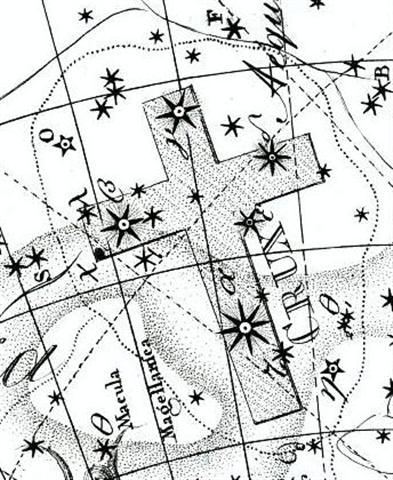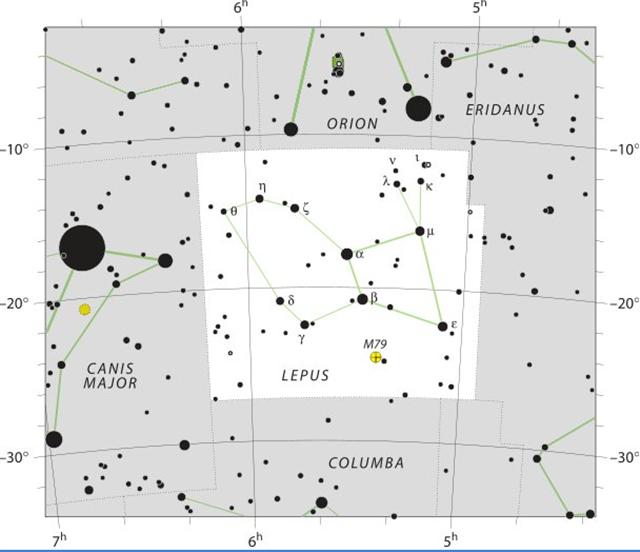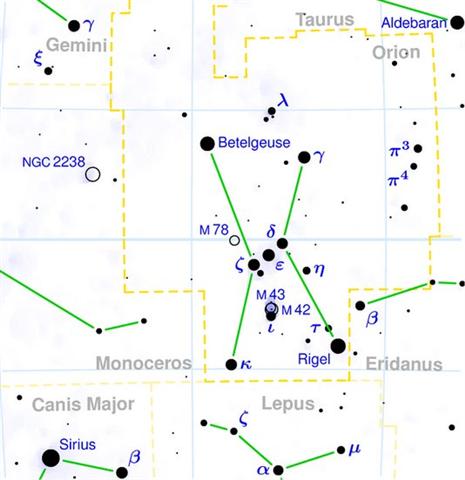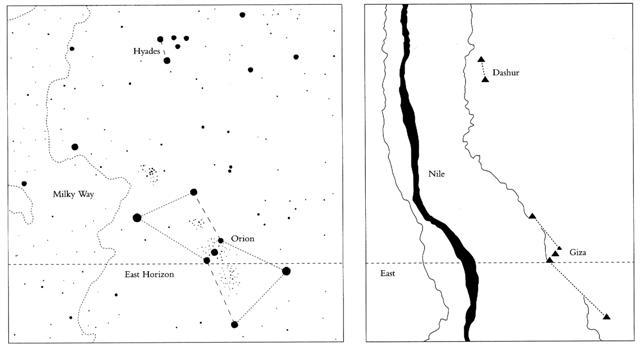15. The upside down Head of the Giant (Ras Algethi, α Herculi) came 73 days later than Acrux - in December 6 - however not rising with the Sun but close to the Full Moon:
When the Full Moon was at the Head of the Hare (Lepus) - obviously referring to the Moon - viz. at μ Lepori, then the Sun would have been at the opposite side of the sky and at the upside down Head of Hercules (α). The star representing the timid Hare could certainly not be α:
Instead the proper letter should be μ because the Moon made the waters go up and down, i.e. she ruled the tides and time:
When people on Easter Island saw the Full Moon against the stars forming the Lepus constellation they knew it was June and that winter solstice was near. A new Sun King had to be created because the Old One was about to come to his end. To create a king was haka-ariki and the glyph type suggests a connection with Tau-toru, the 3 stars ('stones') in the Belt of Orion, straight above Lepus:
From μ Leporis to Heka (λ Orionis), where the Head of Orion ought to have been, and to the central star in Tautoru (Alnilam, String of Pearls, ε Orionis) - there were 6 days: ... Menkaure was allegedly a much more benevolent Pharaoh than his predecessors. According to legends related by Herodotus, he wrote the following: This Prince (Mycerinus) disapproved of the conduct of his father, reopened the temples and allowed the people, who were ground down to the lowest point of misery, to return to their occupations and to resume the practice of sacrifice. His justice in the decision of causes was beyond that of all the former kings. The Egyptians praise him in this respect more highly than any other monarchs, declaring that he not only gave his judgements with fairness, but also, when anyone was dissatisfied with his sentence, made compensation to him out of his own purse and thus pacified his anger. The Gods however ordained that Egypt should suffer tyrannical rulers for a hundred and fifty years according to this legend. Herodotus goes on: An oracle reached him from the town of Buto, which said 'six years only shalt thou live upon this earth, and in the seventh thou shalt end thy days'. Mycerinus, indignant, sent an angry message to the oracle, reproaching the god with his injustice - 'My father and uncle,' he said 'though they shut up the temples, took no thought of the gods and destroyed multitudes of men, nevertheless enjoyed a long life; I, who am pious, am to die soon!' There came in reply a second message from the oracle - 'for this very reason is thy life brought so quickly to a close - thou hast not done as it behoved thee. Egypt was fated to suffer affliction one hundred and fifty years - the two kings who preceded thee upon the throne understood this - thou hast not understood it'. Mycerinus, when this answer reached him, perceiving that his doom was fixed, had lamps prepared, which he lighted every day at eventime, and feasted and enjoyed himself unceasingly both day and night, moving about in the marsh-country and the woods, and visiting all the places he heard were agreeable sojourns. His wish was to prove the oracle false, by turning night into days and so living twelve years in the space of six ...
... Al Maisān, the title of γ Geminorum, by some error of Firuzabadi was applied to this star as Meissa, and is now common for it. Al Sufi called it Al Tahāyī; but Al Ferghani and Al Tizini knew it as Rās al Jauzah, the Head of the Jauzah, which it marks. The original Arabic name, Al Hak'ah, a White Spot, was from the added faint light of the smaller φ¹and φ² in the background, and has descended to us as Heka and Hika. These three stars were another of the Athāfiyy [tripods used for cooking] of the Arabs; and everywhere in early astrology were thought, like all similar groups, to be of unfortunate influence in human affairs. They constituted the Euphratean lunar station Mas-tab-ba-tur-tur, the Little Twins, a title also found for γ and η Geminorum; and individually were important stars among the Babylonians, rising to them with the sun at the summer solstice, and, with α and γ, were known as Kakkab Sar, the Constellation of the King ...
Life originated from mud, from earth mixed with water, and this was oone hekaheka.
|
||||||||||||||||||||||||||||||||||||||||||||||||||||||||||||||||||||||||||||||||||













